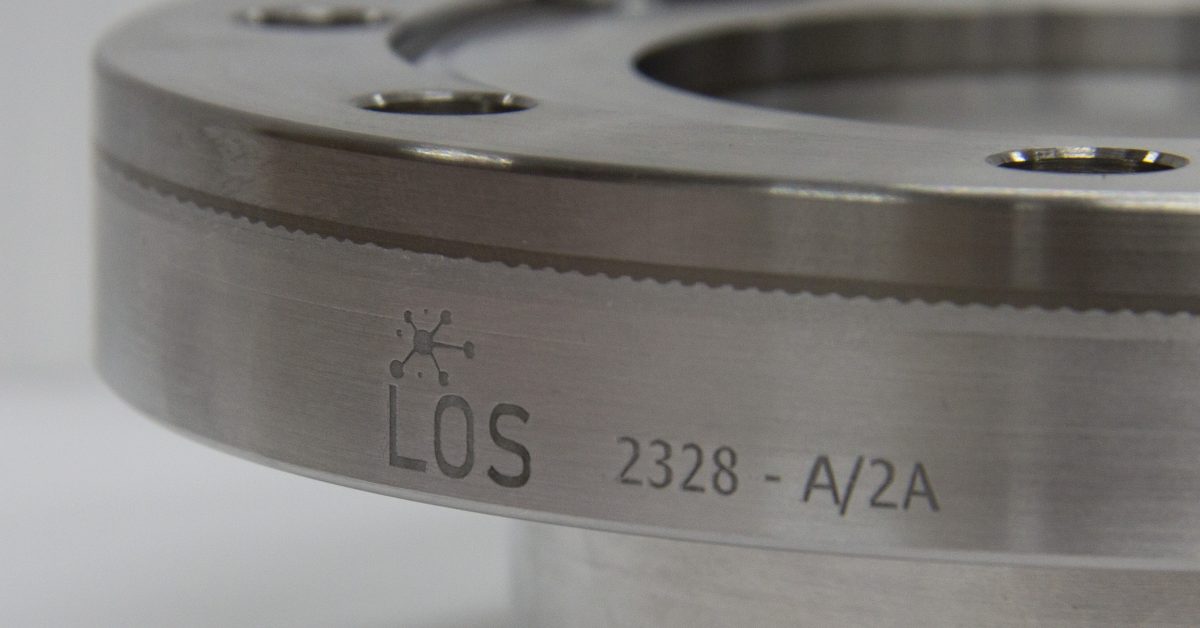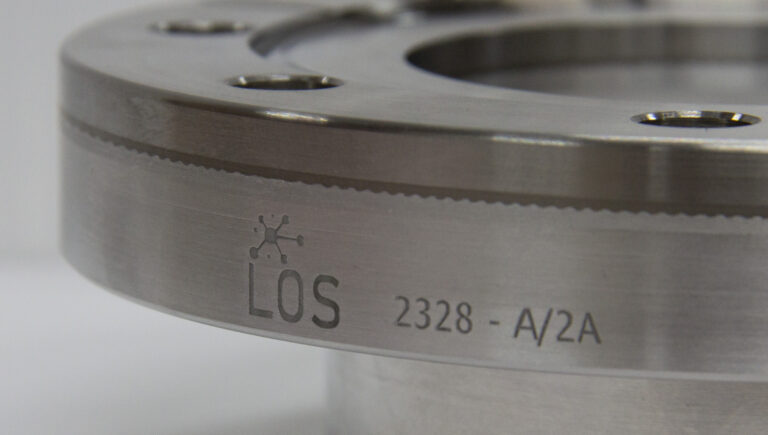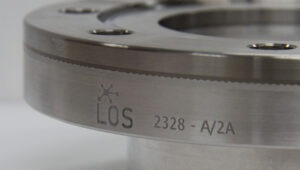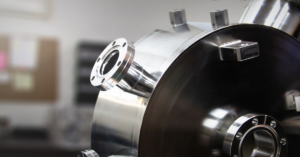The Explosion Welding Process for Ultra High Vacuum Applications

What is explosion welding?
The history of explosion welding dates back to the first World War, when a series of explosive tests yielded the fusion of two metal disks used for charge positioning. The deeply studied phenomenon has since been refined to produce over 260 metal combinations creating joints strong enough to be used in ultra-high vacuum (UHV) and extremely-high vacuum (XHV) applications.
Explosion welding is a solid state, or solid-phase, welding process relying on metal proximity and pressure to achieve a metallic weld. The pressure differential generated by the explosion during this process is around 10 GPa, with detonation speeds reaching 2400-3600 m/s. The force of the explosion sets up an angular collision which produces an ejected plasma. The plasma jet acts to remove impurities from both metals’ surfaces in front of the collision point, leaving behind clean metal for joining. The pressure at the collision point, is enough to squeeze the metals into behaving like viscous fluids. The fluid-like behavior is responsible for creating the wave pattern bond line in an explosive weld.
Heat Affected Zone
area of a metal in proximity to a weld that has altered characteristics due to permanent microstructure changes.
Melting
over-heated or melted metals have the potential to experience material strain to the point of deformation
Metal Bond Diffusion
long term permeation of atoms across metallic bonds
Material greatly influences system builds, tolerances, and experimental design across applications of vacuum science. With such a great variety of properties across material options, the ideal system component may be a combination of dissimilar metals. Unfortunately, creating bimetal components from dissimilar metals with traditional welding techniques often leads to corrosion. This corrosion will eventually lead to cracks and leaks at the joint of the bimetal material. Fortunately, due to the development of explosion welding (EXW), dissimilar metals can be joined with such strength to be rated for UHV and XHV environments.
The Explosion Welding Process

The setup for EXW contain five layers. In order, they are explosive layer, buffer plate, flyer or clad plate, base plate, and backer plate. The base and flyer plate are the two metals to be joined with the flyer plate typically bearing the lower density and yield strength. Providing support for the joining is the buffer and backer plate.
The process begins with the detonation on one end of the explosive layer. Once the explosive charge is detonated, the process continues in a linear fashion across the explosive layer, with the buffer plate protecting the flyer plate from any adverse effects caused by the explosion. With the backing plate acting as an anvil, the flyer plate collides with the base plate.
There are two ways to configure the desired metal plates for explosive collision: using a constant standoff distance (a.) or an angular standoff (b.). The standoff is a carefully calculated metric that ensures the flyer plate will reach the critical velocity required to achieve a solid-state weld when colliding with the base plate. Both methods need adequate surface prep/cleaning but rely on the plasma jet formed on the angular collision to clean the surfaces. Due to the pressure of the process, the angle ensures that any contaminants present are expelled from the surface as the angle closes. Both configurations result in a high-quality wave-form weld, visible in the image below of a titanium-stainless steel ConFlat flange.

Explosion welding successfully joins dissimilar metals, allowing users of bimetallic flanges and fittings the ability to harness multiple material benefits across UHV and XHV systems. By selecting the appropriate configuration, the sealing surface of a bimetal component provides proper knife-edge retainment to create a hermetic seal while ensuring the vacuum chamber retains the properties of the desired metal. This setup ensures your system is cost-efficient, within weight constraints, and maintains material-specific characteristics. ANCORP offers a selection of bimetal ConFlat flanges and bimetal face gland fittings using stainless steel, aluminum, and titanium.
Grade 2 Titanium Features
- Lightweight and higher yield strength make it perfect for a chamber and transfer system.
- Low-z number is advantageous for installation and maintenance under high-radiation levels, compared to stainless steel.
- Low Young’s modulus is suitable for bellows components
- Low thermal expansion coefficient advantageous for heating
- Non-magnetic properties
- High corrosion resistance since the surface oxide layer is chemically stable
- Low thermal conductivity and high melting point
- High electric resistance
Aluminum Features
- Thermal conductivity of Al is more than 10x that of stainless steel.
- Thermal diffusivity of Al is 17x that of stainless steel.
- Fast uniform bakeouts at lower temperatures
- The Young’s modulus of Al is approximately 1/3 of stainless steel.
- Al has 7 orders of magnitude less hydrogen than stainless steel leading to lower outgassing rates
- Nonmagnetic properties



